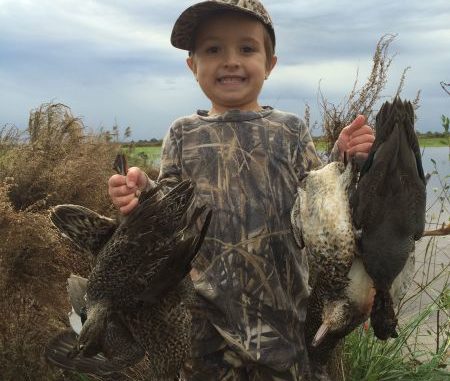
2.64 million birds down, but lowest number of mallards on record, Reynolds says
The second split of duck season opens in all three Louisiana zones on Saturday morning, and if the Louisiana Department of Wildlife and Fisheries’ annual December survey is any indication, hunters might see more action based on the sheer number of birds in the state.
According to Larry Reynolds, LDWF’s waterfowl study leader, the 2.64 million ducks estimated this December is more than twice the November survey total of 1.21 million birds. That number is 18 percent lower than last December’s total of 3.2 million, but slightly higher than the most recent five-year (2.4 million) and long-term (2.55 million) averages.
Thursday evening, Reynolds said survey results from the December flights are somewhat of a mixed bag.
“We’ve got a higher than long-term average number of ducks, but all dabbling duck species except for shovelers are below long-term average, and diving duck species are above long-term average,” he said. “We have this survey of 2.64 million that’s higher than the most recent five-year average, and higher than the long-term average, but we have the lowest number of mallards on record, and all dabbling ducks except spoonies are below long-term average.
“But we’re well above long-term average for numbers of scaup, ring-necked ducks and canvasbacks. It’s a good diving duck survey —we’ve got canvasbacks, lots of ring-neck ducks, and we’ve got pretty good numbers of scaup, but we’ve got record low numbers of mallards, and all the other dabblers are below their long-term December average.”
Without much cold weather so far this fall to push birds down, Reynolds wasn’t sure what he’d find in this month’s survey.
“The weather was pretty mild between the November and December surveys,” he said. “We didn’t have many big fronts to push a bunch of birds down, but birds came anyway — except mallards.”
Mild weather across the flyway is to blame for the lack of greenheads, which are typically late migrants, Reynolds said.
Duck hunters in Canada completed their season with no ice cover at all, and Minnesota hunters opened and closed their season with no push of mallards, he said. Yesterday, a colleague in Iowa emailed Reynolds and said that state was almost completely devoid of ice, with substantial mallards still there this week.
“Mallards are also a species that responds to flooded cornfields north of us,” Reynolds said. “That’s why you look at our changes in wintering ducks, and you see the biggest changes in geese and mallards, because they’re grain-field adapted species.
“But the other species, like gadwalls, ring-necks and green-wings – we still get plenty of them down here.”
More ducks made it into Southeast Louisiana since last month, but Reynolds said two big concentrations of birds there accounted for much of the increase, because fewer ducks were seen in the marshes east of Venice compared to the November survey.
“There was a more even distribution between Southwest and Southeast Louisiana, but in Southwest Louisiana, the birds were pretty evenly distributed across the transect lines. We didn’t see any real big concentrations in particular areas except for all those birds sitting out in the middle of White Lake,” Reynolds said. “But in Southeast Louisiana, we saw really big concentrations on Delta Farms south of Lake Salvador and in the upper-Terrebonne marshes — those concentrations of gadwall and ring-neck ducks were big.
“In the Southeast, the distribution was really clumpy.”
Total dabblers in Southwest Louisiana numbered 982,000, with 252,000 divers in that region, for a total of 1,234,000 birds in the Southwest.
Total dabblers in Southeast Louisiana were 536,000, with 784,000 diving ducks, for a total of 1,320,000 birds in the Southeast.
According to the report, habitat conditions in coastal Louisiana continue to be above average, with good growth of submerged aquatic vegetation in many locations. In Southeast Louisiana, water levels appeared lower in many locations, with good to excellent SAV noted.
Hopefully, birds cooperate for a solid weekend to kickoff the second split.
“From a survey standpoint, everything looks good,” Reynolds said.
To see the complete survey report, click here.


